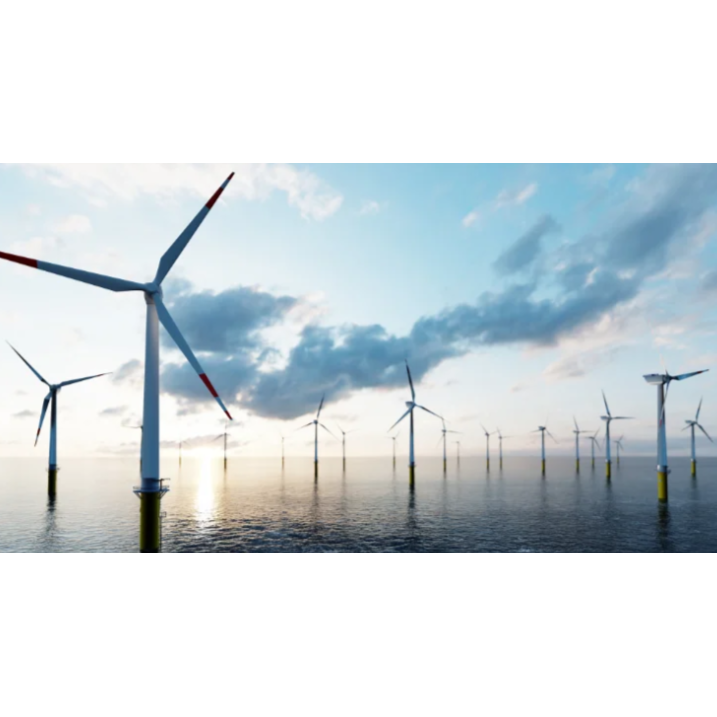China Energy Storage Network News:
Research Background
my country's road traffic system has great potential for asset energyization. Making full use of green energy such as wind and light is the only way to achieve low-carbon development of transportation. As a power source for new energy storage and transportation equipment, hydrogen energy shows great development potential in the source-grid-load-storage-charging-transportation self-consistent energy system. A self-consistent energy system refers to an integrated energy production and consumption system that uses wind and solar new energy power generation and shared energy storage equipment to organically coordinate energy production, conversion, transmission, distribution, storage and other links during planning, construction and operation. However, the rapid development of heterogeneous energy-type flexible loads such as hydrogen fuel cell vehicles and hydrogen energy storage has led to bidirectional coupling between the power grid and the transportation network, resulting in increasing difficulties in energy production and consumption, energy dynamic balance, and system scheduling and operation. How to balance energy self-consistency and low-carbon economy and achieve the integration of distribution network and transportation network through new energy storage is of great value to accelerate energy transformation.
Research content
1. Bidirectional coupling architecture of distribution network and transportation network
The bidirectional coupling architecture of new energy distribution network and transportation network includes power network and transportation network dominated by hydrogen fuel cell vehicles, as shown in Figure 1. The distribution network has the functions of distributed new energy access, electric load energy supply, upper grid interface, and water electrolysis hydrogen production equipment power supply. Distributed new energy output gives priority to powering the distribution network load, and the surplus electricity can be converted into hydrogen energy to supply hydrogen fuel cell vehicles or hydrogen energy storage systems. The transportation network hydrogenation station and hydrogenation substation supply energy for hydrogen fuel cell vehicles, and short-term hydrogen energy storage and shared hydrogen energy storage can make up for the shortage of hydrogen energy. On the other hand, the hydrogen energy storage system can also supply power to the electric load during peak hours of electricity consumption. The bidirectional coupling architecture of new energy distribution network and transportation network allows the interaction and integration of the two systems of energy and transportation that are divided into sections and industries.

Figure 1 Distribution network-transportation network bidirectional coupling architecture
2. Electricity-hydrogen-transportation coupling distribution network model
Considering the operating conditions of high proportion of distributed new energy grid connection and weak synchronous support, the distribution network has relatively weak reactive power control ability and frequent voltage fluctuations. Therefore, the distribution network model consists of distributed wind and solar new energy output model, surplus electricity hydrogen production model and hydrogen fuel cell power generation model. The load size of hydrogen fuel cell vehicles is mainly affected by factors such as mileage, return time and supply and demand of hydrogen refueling stations, so the transportation network model mainly includes hydrogen fuel cell vehicle behavior pattern analysis model, single station hydrogenation demand and transportation network total hydrogenation demand model. Considering the influence of factors such as large-scale hydrogen energy demand at the consumption terminal of the transportation network and hydrogen storage, the hydrogen energy storage model includes short-term hydrogen energy storage and shared hydrogen energy storage.
3. Solution method of two-layer optimization scheduling model of electricity-hydrogen-transportation coupling distribution network based on elite genetic algorithm
The upper-level transportation network hydrogenation model aims to minimize the peak-to-valley difference of load and the lowest hydrogenation cost, and meets the hydrogenation demand of hydrogen fuel cell vehicles as a constraint condition, that is, the actual amount of hydrogen per vehicle cannot exceed the total capacity and cannot be less than the user's expected value. The objective function of the lower-level transportation network-distribution network self-consistent model includes two parts: one is the highest self-consistency rate of system electricity and hydrogen energy; the other is the lowest system carbon emission cost. The elite genetic algorithm is used to solve the model, and the model is verified by taking Haidong City, Qinghai Province as an example, as shown in Figure 2.

Figure 2 Distribution network-transportation network structure diagram
In the example, the transportation network has a main station and two substations. The main hydrogen station is equipped with short-term hydrogen energy storage and shared hydrogen energy storage. The sub-hydrogen station only has short-term hydrogen energy storage, that is, the sub-hydrogen station cannot transport hydrogen energy to the main hydrogen station, and the sub-hydrogen stations cannot provide hydrogen energy for each other. If the hydrogen production from the surplus electricity of distributed wind and solar energy cannot meet the energy demand of hydrogen load, it will first be supplemented by the short-term hydrogen energy storage of the hydrogen station. If there is still a shortage of hydrogen energy, the trailer will call the shared hydrogen energy storage of the hydrogen station. The example sets up 4 operation schemes, and the hydrogen energy storage operation mode of each scheme is shown in Table 1.

The optimization results show that: Scheme 4 is the optimal calculation result. The combination of short-term hydrogen energy storage and shared hydrogen energy storage is the best choice to improve energy self-consistency and reduce carbon emissions. The operation of the hydrogen refueling station, hydrogen refueling substation 1 and hydrogen refueling substation 2 is shown in Figures 3, 4 and 5. The order of hydrogen energy supply is: distributed wind and solar energy surplus power hydrogen production, short-term hydrogen energy storage, shared hydrogen energy storage, and purchase of electricity from the upper-level power grid for hydrogen production.
(1) The energy self-consistency of Scheme 4 and Scheme 2 in Figure 3 can reach 98.16%. Because the hydrogen refueling station only has short-term hydrogen energy storage under both schemes, it needs to purchase electricity from the upper-level power grid for hydrogen production, resulting in a carbon emission cost of 486.20 yuan.
(2) In Figure 4, short-term hydrogen energy storage and shared hydrogen energy storage jointly support the operation of hydrogen refueling substation 1, and the energy self-consistency rate reaches 97.07%. The purchase of electricity from the upper-level power grid for hydrogen production generates a carbon emission cost of 272.17 yuan.
(3) In Figure 5, short-term hydrogen energy storage and shared hydrogen energy storage jointly support the operation of hydrogen refueling substation 2, achieving 100% energy self-consistency, without the need to purchase electricity from the upper power grid, and without incurring carbon emission costs.
(4) In the early morning, the output of distributed wind and solar new energy is small and the hydrogen storage is insufficient, so it is necessary to purchase electricity from the upper power grid to meet the load energy demand.
(5) After 18:00, the output of distributed wind and solar new energy decreases, while the hydrogen refueling demand of hydrogen fuel cell vehicles increases, resulting in the inability of surplus electricity to produce hydrogen to meet the hydrogen load energy demand. First, the hydrogen energy shortage is supplemented by the shared energy storage of the hydrogen refueling substation.
The above optimization calculation results and analysis show that the self-consistent energy system is an effective measure to promote the high-level consumption of new energy, meet the energy demand of various loads, and reduce carbon emissions.



Conclusion
Aiming to establish a self-consistent energy system, this paper studies the low-carbon economic optimization scheduling of the electricity-hydrogen-transportation coupled distribution network taking into account the energy self-consistency rate and shared hydrogen energy storage. The study shows that the configuration of short-term hydrogen energy storage and shared hydrogen energy storage can improve the energy self-consistency rate and reduce the carbon emission cost. At the same time, the synergistic effect of short-term hydrogen energy storage and shared hydrogen energy storage at hydrogen refueling stations enables energy to have multi-time and space transfer characteristics, which can achieve the optimal state with the highest energy self-consistency rate and the lowest carbon emission cost. However, there is still a lack of effective ways to guide the cost of regulating resources on both the source, grid, load and storage sides. In the future, research work will be carried out from the following aspects:
(1) Planning and operation strategy of urban integrated hydrogen production and hydrogen refueling stations;
(2) Diversified new energy storage business model and operation model;
(3) Economic benefit analysis of user-side integrated energy storage system;
(4) Market scale assessment of diversified new energy storage auxiliary services;
(5) Price linkage mechanism for diversified energy production organizations.
[Editor: Gao Qian]
 Pages you might like
Pages you might like




 Today's topic
Today's topic







 Exhibitions you may be interested in
Exhibitions you may be interested in
 Latest information
Latest information
 Follow official account
Follow official account
 Online support
Online support
 鄂ICP备2022017323号
鄂ICP备2022017323号
 鄂公网安备 42018502006493
鄂公网安备 42018502006493
 Launch Exhibition
Launch Exhibition
 Release information
Release information









